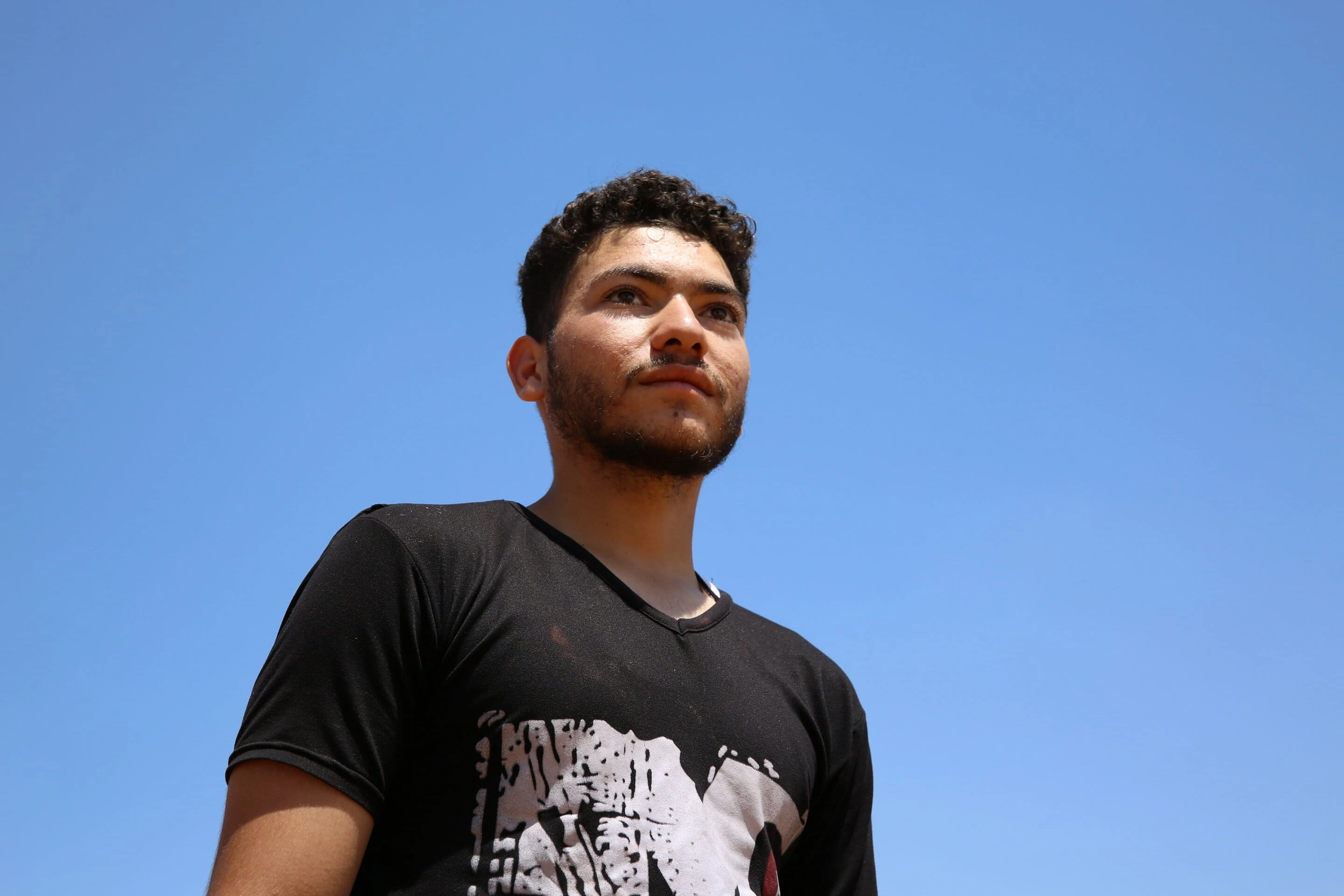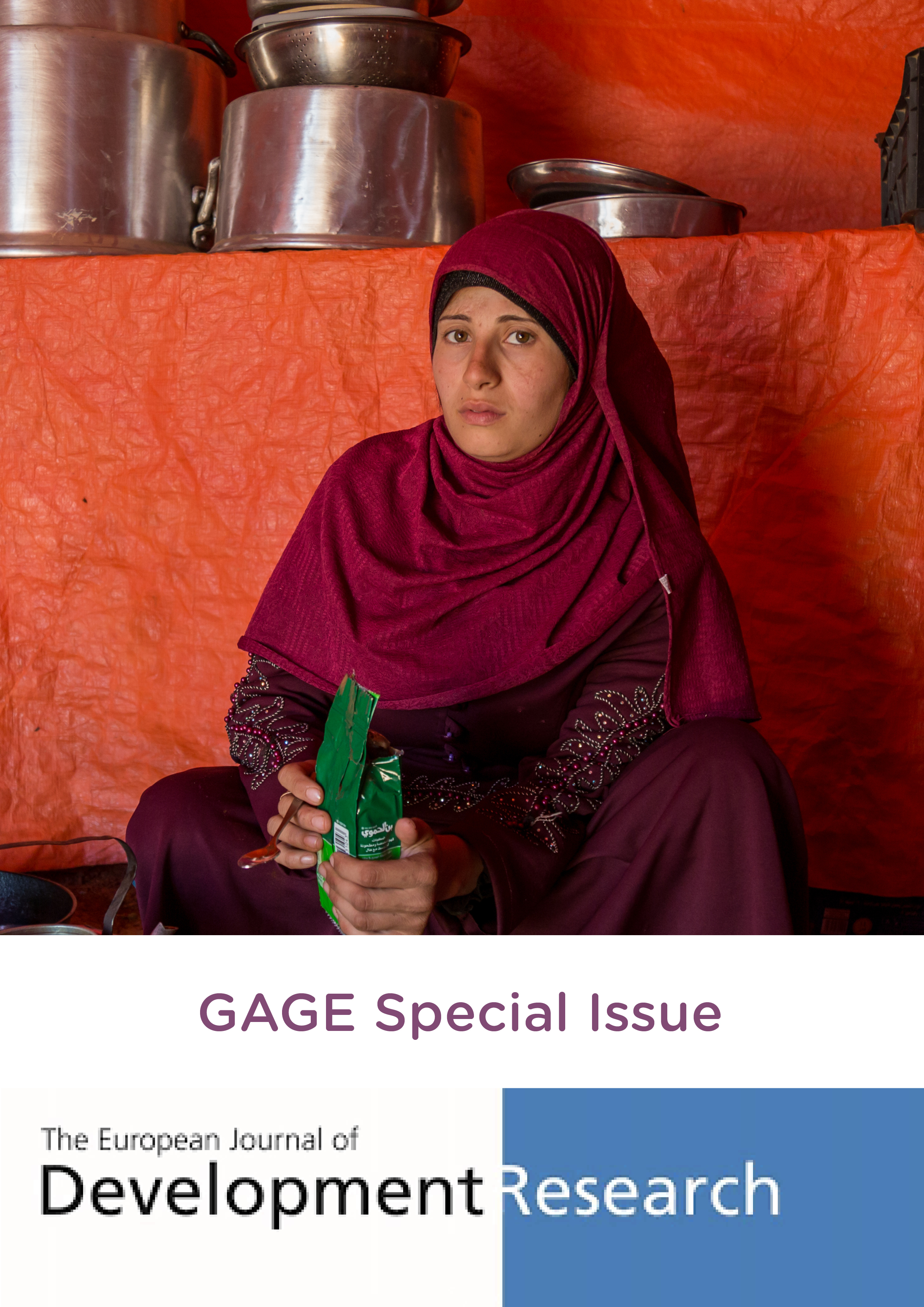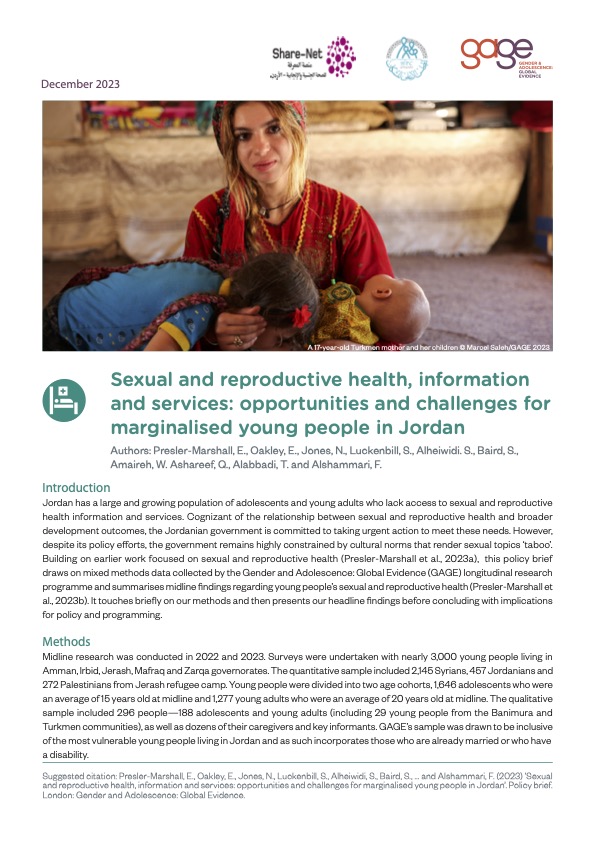
Exploring disparities and drivers of contraceptive use among Syrian refugee youth: evidence from a mixed-methods study in Jordan
publication
Exploring disparities and drivers of contraceptive use among Syrian refugee youth: evidence from a mixed-methods study in Jordan
14.09.2025 | Jordan
Country
Jordan
Capability domains
Health, Nutrition and Sexual and Reproductive Health (SRH)
Audience type
Researcher
Year of publication
2025
Study methodology
Mixed-methods
Authors
Sara Luckenbill, Sarah Baird, Sarah Alheiwidi, Nicola Jones
Access to sexual and reproductive health services is an explicit element of the Sustainable Development Goals, and is critical for achieving family planning goals and broader well-being of young people. Youth (15–24 years) face many barriers to accessible, quality services, and refugees often experience additional barriers due to physical, economic, legal and/or social exclusion. This study explored these barriers in the context of Jordan, a country that has one of the highest proportions of refugees globally.
Suggested citation
Luckenbill, S., Baird, S., Alheiwidi, S. and Jones, N. (2025). ‘Exploring disparities and drivers of contraceptive use among Syrian refugee youth: evidence from a mixed-methods study in Jordan.’ Conflict and health 19(1): 48 (https://doi.org/10.1186/s13031-025-00690-0)


